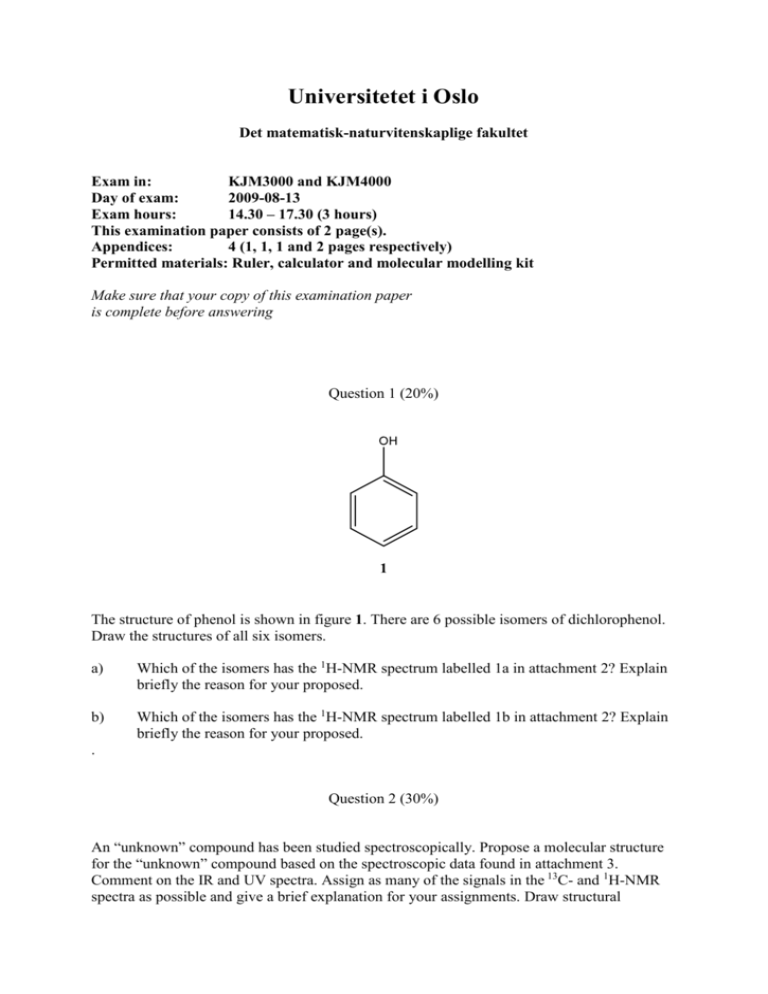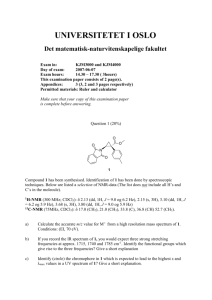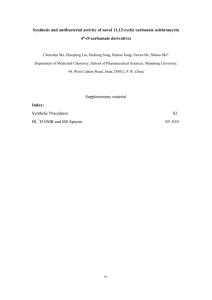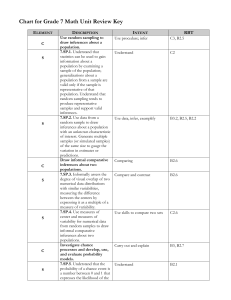Universitetet i Oslo
advertisement

Universitetet i Oslo Det matematisk-naturvitenskaplige fakultet Exam in: KJM3000 and KJM4000 Day of exam: 2009-08-13 Exam hours: 14.30 – 17.30 (3 hours) This examination paper consists of 2 page(s). Appendices: 4 (1, 1, 1 and 2 pages respectively) Permitted materials: Ruler, calculator and molecular modelling kit Make sure that your copy of this examination paper is complete before answering Question 1 (20%) The structure of phenol is shown in figure 1. There are 6 possible isomers of dichlorophenol. Draw the structures of all six isomers. a) Which of the isomers has the 1H-NMR spectrum labelled 1a in attachment 2? Explain briefly the reason for your proposed. b) Which of the isomers has the 1H-NMR spectrum labelled 1b in attachment 2? Explain briefly the reason for your proposed. . Question 2 (30%) An “unknown” compound has been studied spectroscopically. Propose a molecular structure for the “unknown” compound based on the spectroscopic data found in attachment 3. Comment on the IR and UV spectra. Assign as many of the signals in the 13C- and 1H-NMR spectra as possible and give a brief explanation for your assignments. Draw structural equations with arrows to account for the fragmentation reactions which produce the following fragments: 202, 200, 174, 172. . Question 3 (50%). An “unknown” compound has been studied spectroscopically. Propose a molecular structure for the “unknown” compound based on the spectroscopic data found in attachment 4. Calculate εmax from the UV spectrum and very briefly explain what it means. Assign as many functional groups as possible from the IR spectrum. Assign as many of the signals in the 13Cand 1H-NMR spectra as possible and give a brief explanation for your assignments. Draw structural equations with arrows to account for the fragmentation reactions which produce the following fragments: 178, 177, 176, 162. Which fragments (m/z values) give rise to the meta stabile peaks in the MS-spectrum? Vedlegg 1 / Attachment 1 Vedlegg 2 / Attachment 2 1 H-NMR spectrum 1a (300 MHz) of dicholorphenol (C6H4Cl2O). 1 H-NMR spectrum 1b (300 MHz) of dicholorphenol (C6H4Cl2O). Vedlegg 3 / Attachment 3 Vedlegg 4 / Attachment 4 Element analyse/Elemental analysis: C 67.7%, H 6.4%, N 8.0%. UV, MS and IR spectra. UV: Cell length = 1cm. MS: metastabile peaks at 122 and 123.8. 1 H-NMR spektrum/spectrum 13 C-NMR spektrum/spectrum.











